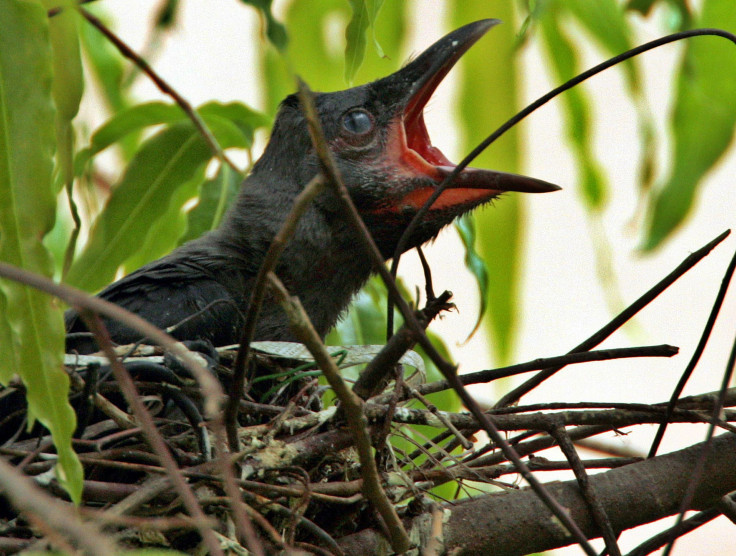Crows And Humans Share Similar Response To Danger

Crows have the special ability to remeber specific faces for several years after just one encounter. Building off of this knowledge, new research demonstrates crows and humans share the ability to recognize faces and associate them with negative or positive feelings.
"It appears that birds have a region of their brain that is analogous to the amygdala of mammals," said John Marzluff, University of Washington professor of environmental and forest sciences. "The amygdala is the region of the vertebrate brain where negative associations are stored as memories.
Researchers captured crows while wearing threatening masks. Although the crows were never treated in a threatening way, investigators believe the fact that crows have been captured prompt a negative association with the mask. In the next four weeks researchers fed the crows while wearing a mask that was referred to as the "caring face." Both masks were designed based on actual individual's faces, which exhibited neutral expressions. Therefore the associations made by the crows were solely based off their interactions with researchers.
While common neurological studies of animals typically start by sedating the animals, Marzluff began with an alternative approach. The birds were injected with a glucose fluid, developed by the University of Washington, into the bodies of alert crows. The fluid saturated regions of the brains that were most active. They were exposed for 15 minutes to an individual wearing either a threatening or caring mask. The birds were then sedated and their brains were scanned. Following the experiment the birds were released back into the wild.
The scans revelaed threatening faces activated the circuitry, amygdalar, thalamic and brainstem regions, which is related to human emotion, motivation and conditioned fear learning. While caring faces stimulated motivation and striatal regions.
When displayed threatening faces crows froze, fixed their gaze and their blinking rate decreased. This was linked to the bird's perception of fear and escape behavior.
Until recently, neurological studies involved how birds register what they hear, how they learn and come up with songs on their own. Now researchers can understand the visual system of birds and how it corresponds to behavioral action. Like humans, crows use complex visual sensory systems in order to recognize faces, which moderated their behavioral response.
"By feeding and caring for birds in captivity their brain activity suggests that the birds view their keepers as valued social partners, rather than animals that must be feared. So, to keep captive animals happy we need to treat them well and do so consistently," he said.
Marzluff hopes the data may help researchers reduce conflict between endangered species and birds. He believes by stimulating a negative experience with eating a tortoise, a raven's brain will quickly learn the association.
The study was published in the Proceedings of the Natural Academy of Science.



























